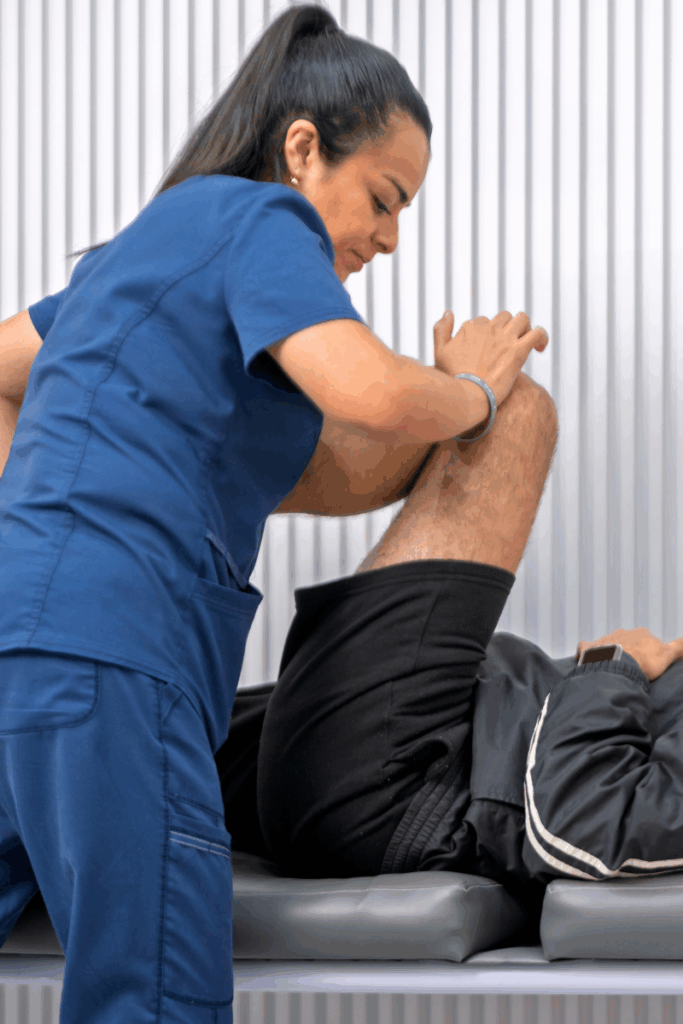What Physical Therapists Look for During Your First Evaluation
Posted by: Reform Physical Therapy in Injury Prevention, New Patients, Physical Therapy, Reform PT Education on November 18, 2025
Your first visit can feel a little uncertain, which is why this Physical Therapy Evaluation Guide explains what actually happens during your appointment. Your evaluation is simply a conversation and movement check to help your therapist understand your body, your goals, and the reason you’re experiencing pain or limitations. Once you know what they look for, the entire process feels much more comfortable.


Why the First Evaluation Matters
Your first evaluation sets the foundation for your entire PT plan. It gives your therapist a full picture of what’s going on, how your body is moving, and what might be driving your pain or limitations. This is how they decide which exercises, treatments, and strategies will help you recover safely and effectively.
Your Health History and Story
Your PT will begin by asking about your symptoms—when they started, what makes them better or worse, and how they impact your daily life. They may ask about any past injuries, surgeries, medical conditions, or past PT experiences. This helps them understand the “big picture” behind your current issue, instead of just focusing on the painful area.
They’ll also talk about your lifestyle. If you sit at a desk all day, lift heavy at work, play a sport, chase toddlers, or love long walks in your neighborhood, all of that matters. Knowing how you use your body each day helps them shape a plan that fits you.
Posture and Alignment
Your therapist will look at how you stand, sit, and move naturally. Posture gives clues about muscle tightness, weakness, or habits that may be adding extra stress to certain joints. They’re not judging you—they’re gathering information about how your body works.
Strength and Mobility
Your PT will gently test how your joints move and how strong certain muscle groups are. They may ask you to raise your arm, bend your knee, or turn your head. This isn’t a test you can fail. It’s simply a way to understand what areas are tight, weak, or not moving the way they should.


Balance and Coordination
Depending on your symptoms, your therapist may check your balance. This can be as simple as standing on one leg, walking on your toes or heels, or moving your head while standing still. These tests reveal how your muscles, joints, and nervous system work together.
Movement Patterns
Your therapist may ask you to perform everyday movements like squatting, stepping up, or bending down. They’re watching how different parts of your body compensate or react. This helps them see what may be contributing to pain or weakness.
Palpation (Hands-On Assessment)
Your PT may gently feel—“palpate”—certain muscles, joints, or areas of soreness. This helps them understand where tenderness, inflammation, or tightness is coming from.
Discussing Your Goals
A major part of your evaluation is talking about what you want to get back to. Whether your goal is lifting your grandkids, running again, getting through a workday without pain, or simply walking comfortably, your therapist uses this information to design a plan that fits your life.
Creating Your Personalized Plan
By the end of the evaluation, your PT will explain what they found and how it connects to your symptoms. They’ll walk you through a customized treatment plan that may include in-clinic exercises, hands-on techniques, and simple at-home routines to help you feel better faster.
Read related blog post >> What to Expect During Your First Week of PT
What Happens After the Evaluation
Most people start with a few exercises right away. These are designed to improve movement, reduce pain, and support the areas that need it most. Your PT will show you how to do them safely and make sure they feel right for your body. From there, each session builds on your progress until you’re moving more comfortably and confidently.
Ready to get started? Call us today!
